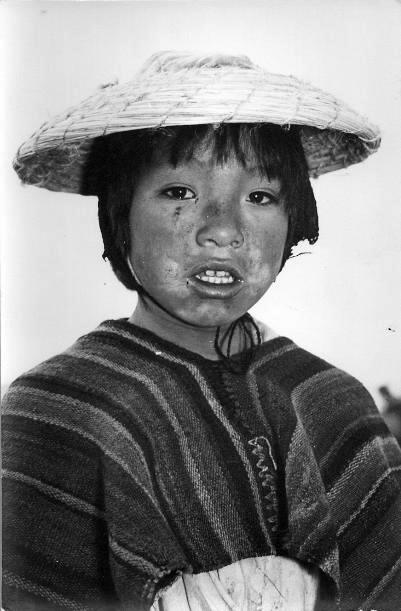
Figure 1.-- This Peruvian boy lived in the Urubama Valley near Machu Pichu. The photograph was probably taken in the 1950s. The poncho was an Inca mainstay. |

|
The Inca were master weavers. The nobility wore garments woven from vicuņa. The common people wore garments wove from the more course llama wool. We have very limited information at this time. The child sacrifical victims found in the High Andes has added some information. The Inca were vmadsters weavers, but weaving is the production of textiles and textiles are only the first step in the production of clothing. Inca weaving produced rectangular texttiles. Creating garments out of those textiles was difficult undertaking, especially without metal sewing needles.
Both men and women wore headbands.
Inca men wore as their basic garment a sleeveless tunic. It was generally made of a broad piece of cloth that was doubled over and sewn together along the outer edges. The bottom was left open. The other basic garment was a large cloak that was worn over the shoulders. The two corners were tied closed in front. The cloak might be tied under one arm to leave the latter free for active work, especially field labor. Breech cloths might be worn underneath.
Men also might have a large cloak or mantle which was worn over the shoulders and fasted at the front with a metal pin. All these garments were made from woven cloth. They were fairly standard within the Quechua heart of the Empire, but variation was found in the newly conquered perifery. Diferetiation existed as a result of the varied colors and designs of the weavers. Social status affected the quality of the weaving and the grade of wool utilized. The Incas swore sandals made from untanned llama hide but we also note braided fiber. Here there were probably status and regional variations. Men did not have pockets, but they carried a small bag which served the samne purpose. There was no money in the socialist Inca world, but the Inca man used the bag for coca leave which they chewed, amulets, and a variety of other personal possessions.
Inca women commonly wore a large piece cloth on their head in addition to headbands. The basic woman's garment was a kind of one-piece dress that extended from the shoulder to the ankles. It was worn with a a wide, ornamented waist sash. The top of the dress was connected over the shoulders used long pins that passed under the arms at the sides. Like the men's garments, thw woman's dress was a rectangular woven textile, in this case wrapped around the body. Women also wore sandals.
The metal pins were large straight pins called astopos. They were made of copper, silver, and gold, depending on the individual's social status. The Inca had not yet developed bronze. The pins were made with large heads.
Fancy ones were done as animal figures or even human figures. Most were use circular, or semicircular disks.
They were large enough that the sharp edges could be used as a small knife.
Navigate the Historic Boys' Clothing Web Site:
[Return to the Main Inca page]
[Return to the Main South American Native American page]
[Return to the Main Native American page]
[Introduction]
[Activities]
[Biographies]
[Chronology]
[Clothing styles]
[Countries]
[Bibliographies]
[Contributions]
[Essays]
[FAQs]
[Glossaries]
[Images]
[Links]
[Registration]
[Tools]
[Boys' Clothing Home]
